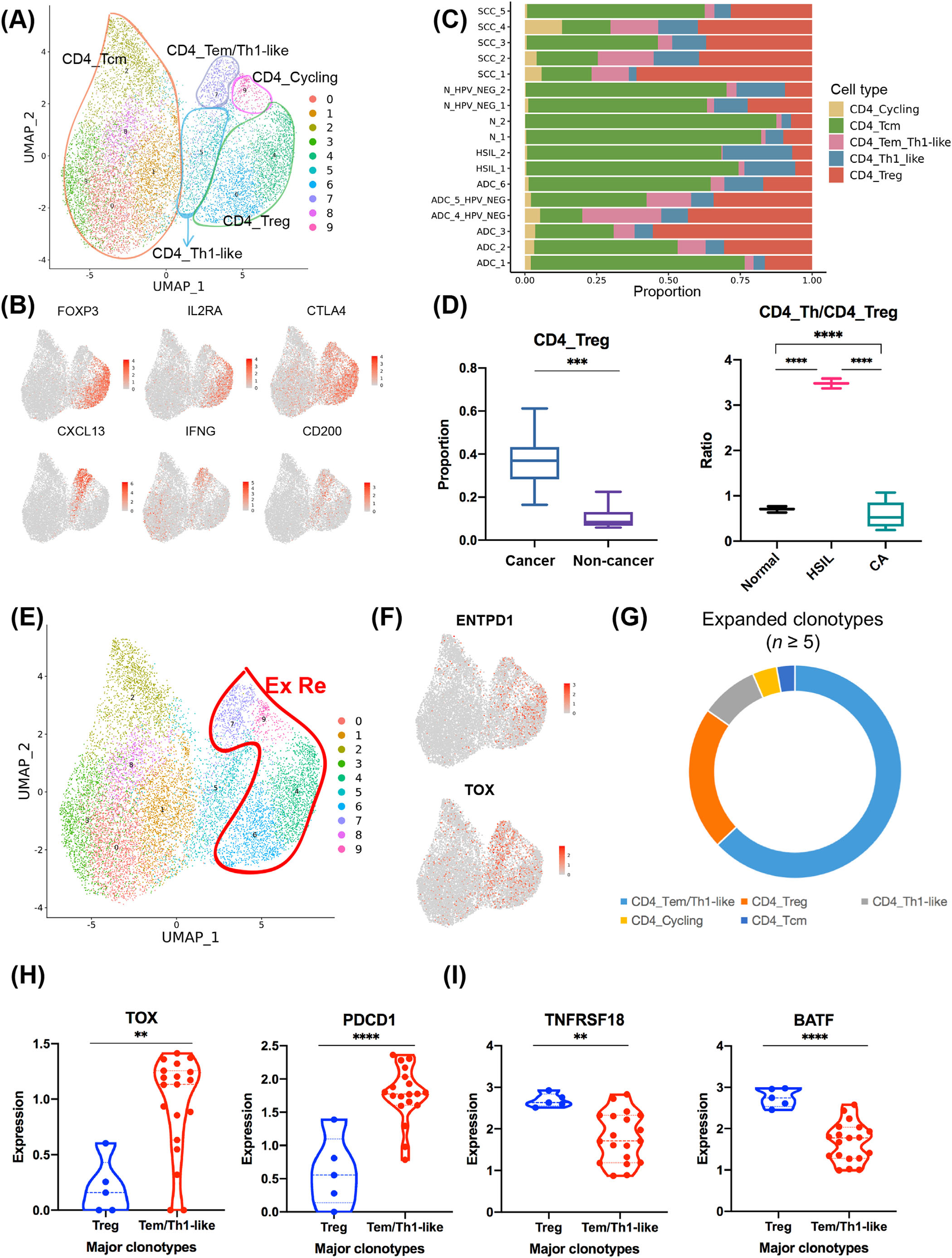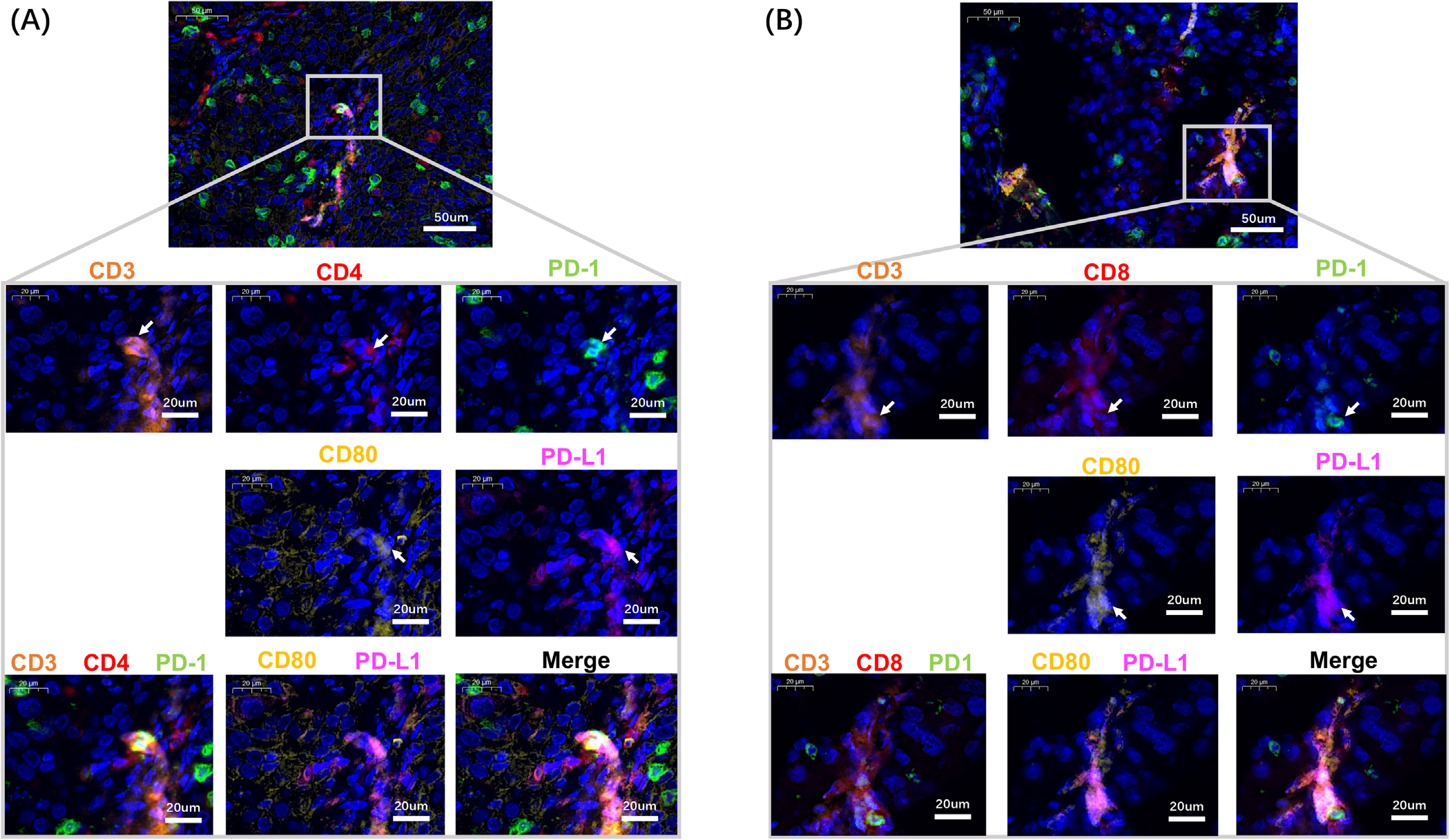- Cart 0
- English
Boosting Cervical Cancer Research with the Absin Multicolor Kit
Published in Cancer Communications, this article titled "Interactions of Indoleamine 2,3-dioxygenase-expressing LAMP3+ dendritic cells with CD4+ regulatory T cells and CD8+ exhausted T cells: synergistically remodeling of the immunosuppressive microenvironment in cervical cancer and therapeutic implications" is a study focusing on the immune microenvironment in cervical cancer, particularly the interactions between LAMP3+ dendritic cells (DCs), CD4+ regulatory T cells (Tregs), and CD8+ exhausted T cells (Tex), and how these interactions synergistically reshape the immunosuppressive microenvironment in cervical cancer, with implications for therapy.
Research Background
Cervical cancer is the fourth most common cancer among women globally. Despite the application of immunotherapy in clinical practice, its efficacy remains suboptimal. Therefore, researchers need to further investigate the mechanisms of immune remodeling in cervical cancer and explore new therapeutic targets.
Research Methods
● Single-cell RNA sequencing (scRNA-seq): Researchers performed single-cell RNA sequencing on 17 clinical samples (including normal cervical tissue, high-grade squamous intraepithelial lesions, and cervical cancer tissue) to explore the cellular subpopulations and interactions within the tumor microenvironment (TME).
● Multiplex immunohistochemistry (mIHC): To validate the findings from scRNA-seq, researchers conducted multiplex mIHC staining on cervical cancer tissue to observe the spatial colocalization of LAMP3+ DCs with CD4+ Tregs and CD8+ Tex cells.
Interpretation of Indicators
● LAMP3+ dendritic cells (DCs): LAMP3 is a lysosome-associated membrane protein typically expressed in mature DCs. The study demonstrated that these cells express IDO1 (indoleamine 2,3-dioxygenase) in cervical cancer, which is involved in tryptophan metabolism and associated with immunosuppression.
● CD4+ regulatory T cells (Tregs): These cells regulate immune responses through the expression of marker genes such as FOXP3 and typically play a role in suppressing excessive immune activation. The study suggested that the interaction between Tregs and LAMP3+ DCs may promote immune evasion in cervical cancer.
● CD8+ exhausted T cells (Tex): These cells are functionally exhausted CD8+ T cells, usually characterized by high expression of PD-1 under chronic antigen stimulation. The data showed that the interaction between these cells and LAMP3+ DCs may contribute to the formation of an immunosuppressive microenvironment.
● Mouse model experiments: A subcutaneous tumor model was established in C57BL/6 mice using the murine cervical cancer cell line (TC1) to evaluate the efficacy of combined treatment with IDO1 inhibitors and immune checkpoint blockade (ICB).
Research Results
● Characteristics of LAMP3+ DCs: The study found that LAMP3+ DCs express IDO1 in their mature state, affecting tryptophan metabolism and interacting with tumor-reactive exhausted CD8+ T cells and CD4+ regulatory T cells to form an immunosuppressive cycle, mediating immune evasion in cervical cancer.

● Multiplex mIHC results: Multiplex mIHC validated the colocalization of neoantigen-reactive T cells (CD3+, CD4+/CD8+, and PD-1+) and LAMP3+ DCs (CD80+ and PD-L1+) in the cervical cancer microenvironment.

● Combined treatment efficacy: In the mouse model, combined treatment with IDO1 inhibitors and ICB agents significantly reduced tumor volume compared to ICB monotherapy.
Conclusion
In summary, the role of LAMP3+ DCs in cervical cancer is multifaceted. They are involved in immune regulation and metabolic processes within the tumor microenvironment and are closely related to the interactions between tumor cells and T cells, collectively promoting tumor immune evasion and progression. Therefore, LAMP3+ DCs can be considered a potential target for immunotherapy in cervical cancer.
Recommended Products:
|
Catalog No. |
Product Name |
Specifications |
|
Absin 7-Color IHC Kit (Anti-Rabbit and Mouse Secondary Antibody) |
20T/100T |
|
|
Absin 7-Color IHC Kit(Anti-Rabbit Secondary Antibody) |
20T/100T |
|
|
Absin 7-Color IHC Kit (plus) (Anti-Rabbit Secondary Antibody) |
20T/100T |
|
|
Absin 6-Color IHC Kit (Anti-Rabbit and Mouse Secondary Antibody) |
20T/100T |
|
|
Absin 6-Color IHC Kit (plus) (Anti-Rabbit and Mouse Secondary Antibody) |
20T/100T |
|
|
Absin 6-Color IHC Kit (Anti-Rabbit Secondary Antibody) |
20T/100T |
|
|
Absin 6-Color mlHC Kit(plus) (Anti-Rabbit Secondary Antibody) |
20T/100T |
|
|
Absin 5-Color IHC Kit (Anti-Rabbit and Mouse Secondary Antibody) |
20T/100T |
|
|
Absin 5-Color IHC Kit (Anti-Rabbit Secondary Antibody) |
20T/100T |
|
|
Absin 4-Color IHC Kit (Anti-Rabbit and Mouse Secondary Antibody) |
20T/100T |
|
|
Absin 4-Color IHC Kit(Anti-Rabbit Secondary Antibody) |
20T/100T |
|
|
Antibody eluent (for mIHC) |
30mL |
Absin provides antibodies, proteins, ELISA kits, cell culture, detection kits, and other research reagents. If you have any product needs, please contact us.
|
Absin Bioscience Inc. |
 Follow us on Facebook: Absin Bio Follow us on Facebook: Absin Bio |
April 27, 2025
Clicks:173
